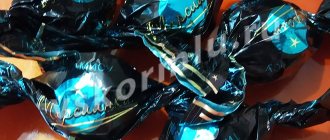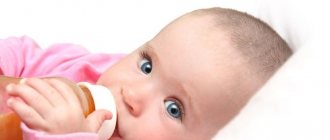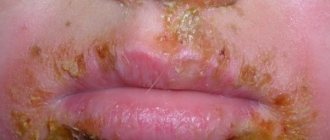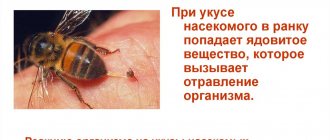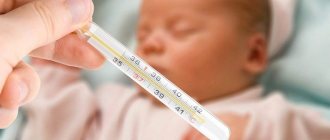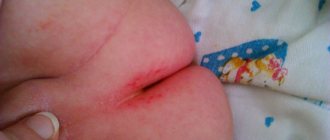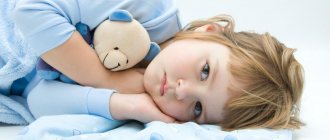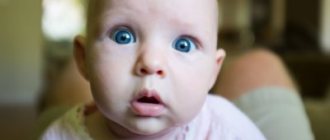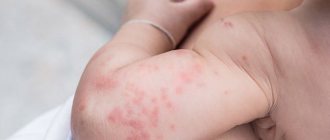In the process of its growth and development, the child’s body is constantly faced with various infections. A skin rash can be the result of some kind of infectious disease, so you should take the appearance of acne seriously, even if it does not bother your child at all.
Only a specialist knows what type of acne a child may have and can accurately determine the cause and nature of the appearance of acne. Some types of acne can be a signal of serious illness.
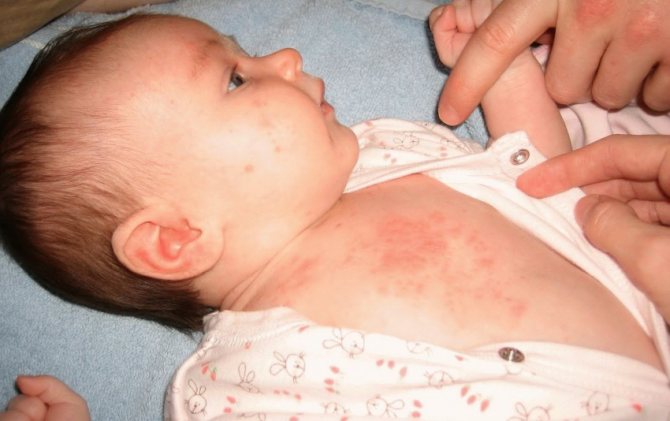
Appearance
Pimples on the skin of children can appear on various parts of the skin. Their location and appearance may indicate various diseases:
- red pimples on the chin that form spots;
- watery rashes all over the body;
- small rashes on the body;
- large red spots are localized on the back, shoulders and buttocks.
If you discover pimples of this nature, you should immediately contact a specialist.
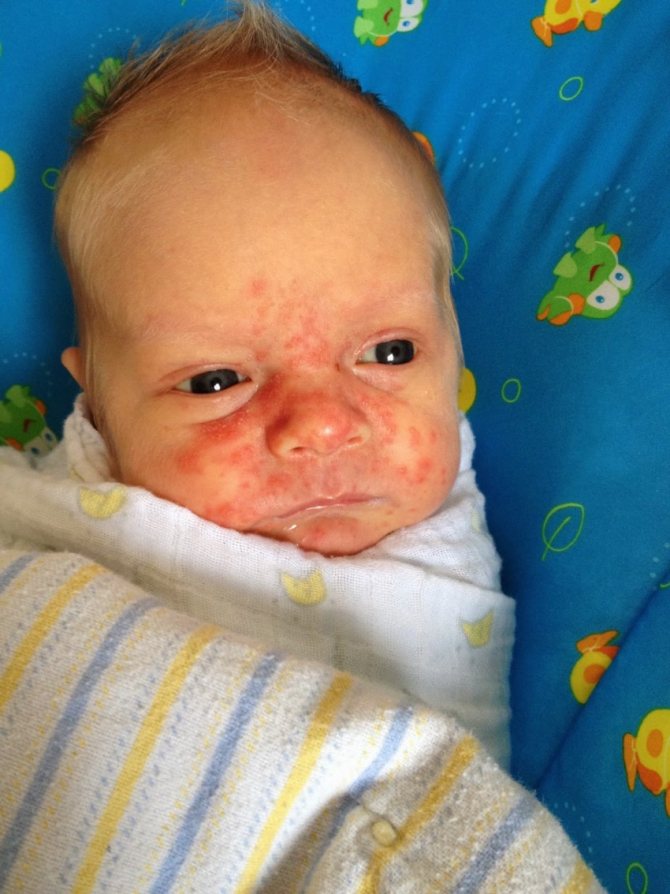
What can red pimples mean?
Red rashes often look different. They can be permanent, or they can appear periodically and immediately disappear. In some cases, such pimples increase in size and cause severe discomfort to the child. If the change in skin color becomes more pronounced every day, you should immediately consult a doctor. Some common causes of this rash:
- Teething. Small pinkish pimples appear on the cheeks or chin. Their localization depends on which tooth is being cut. Associated symptoms are elevated body temperature. The baby becomes capricious. Cold symptoms may occur.
- Chicken pox. Characterized by a bright red rash. At first, rare small pimples appear, but gradually their number increases. The child feels severe discomfort and has a constant need to scratch the rash.
- Red pimples on the butt may be a result of poor hygiene. In addition, constant wearing of diapers provokes the appearance of diaper rash on delicate skin.
- Skin dehydration sometimes also manifests as a rash. Pimples cover the arms and hands due to excessive dryness of the environment. This usually happens in autumn or spring.
- Miliaria also manifests itself as redness of the skin. This is not a pathological condition, but a normal skin reaction to heat.
Heat rash or irritation
Miliaria is a skin irritation in the form of a small reddish rash with liquid (pictured). It is especially typical for infants and children under 3 years of age. During this period, the skin is most delicate, and therefore reacts sharply to external irritants. The most common cause of heat rash is poor hygiene. However, even a perfectly clean baby can suffer from it in the hot season. This is normal: this is how the baby adapts to the outside world.
Herbal baths (using string, celandine) will help relieve irritation. If prickly heat does not go away for a long time, you need to contact your pediatrician. The doctor will prescribe an ointment and tell you what tests you need to take to determine whether the rash is definitely prickly heat. It often happens that such irritation is accompanied by a bacterial infection, which requires serious treatment.
READ ALSO: How to quickly cure urticaria in an adult at home
Allergic reaction
Allergies are a common disease in children. The reason for its appearance is a failure in the immune system. The rash in this case is caused by contact of the body with allergens, the most likely of which is breast milk. The mother does not follow the correct diet, so the baby’s immune system reacts with irritation. With severe intoxication and regular contact with the allergen, acne takes the form of a scab and begins to get wet.
The skin allergy is called urticaria because of its superficial resemblance to nettle sting. To avoid such a reaction due to breast milk, you should avoid red fish, whole milk, veal, citrus fruits, nuts and tomatoes.
Infectious diseases
Infectious diseases can be caused by bacteria or viruses. Viral infections are highly contagious. A red rash is a clear symptom of diseases such as measles, chicken pox and rubella (we recommend reading: what a measles rash in children looks like and its photo). The diseases are quite severe. Body temperature may rise, swelling and itching may occur. A viral infection requires temporary isolation of the child, because others can also become infected.
Most often, children suffer from the following viral infectious diseases:
- Measles. Its characteristic symptom is pink spots on the head. They are usually localized on the face and behind the ears. As the disease progresses, the rash “sinks” and gradually covers the child’s entire body. The clinical picture is complemented by conjunctivitis, cough, runny nose, headaches and fever (we recommend reading: symptoms, treatment and photos of conjunctivitis in children).
- Rubella. It differs from measles in its milder course. The rash with rubella is pale, the temperature is slightly elevated (we recommend reading: what do the symptoms look like with photos of rubella in children?). There may be a slight enlargement of the lymph nodes. The localization of the spots is the same as with rubella: first the rash affects the face, and then the whole body.
- Chickenpox in childhood is mild, so it is advisable to get over it. The rash causes significant discomfort. The child complains of itching. The older the patient is, the greater the risk of complications.
- Herpetic infection. Herpes rash is painful. It looks like small reddish pimples filled with liquid. The primary disease can be quite acute. The body temperature rises, the areas of the rash are very painful. Relapses occur when immunity decreases and are easier. Only rashes appear, which go away on their own after 5–7 days.
READ ALSO: Facial care at home (creams, masks, scrubs, peelings, etc.)
Bacterial infections that cause a rash include:
- Scarlet fever. Its causative agent is streptococcus. At the very beginning, the disease can easily be confused with a sore throat, even from the description: the temperature rises sharply, and a sore throat appears. However, a little later the skin also changes. The skin on the hands and cheeks begins to turn red and peel. A purulent plaque appears in the mouth.
- Meningitis. This infection is the most dangerous. A rash is an alarming symptom of meningitis, and (for more details, see the article: symptoms of meningitis in children and photos of the rash with a description of treatment). because this is a harbinger of imminent death. Associated symptoms: vomiting, severe increase in body temperature. The rashes resemble small hemorrhages in the form of spider veins (pictured). If you notice such symptoms, you should seek emergency medical help.
Location on the body
Red pimples on the chin of a baby under one year old are a type of postpartum rash. Occurs as a result of breastfeeding. They may appear as a result of increased salivation, especially during teething.

The appearance of watery pimples all over the skin may indicate an infectious disease. Their localization on the back, abdomen, arms and legs signal a viral infection and are a reason to immediately consult a doctor.
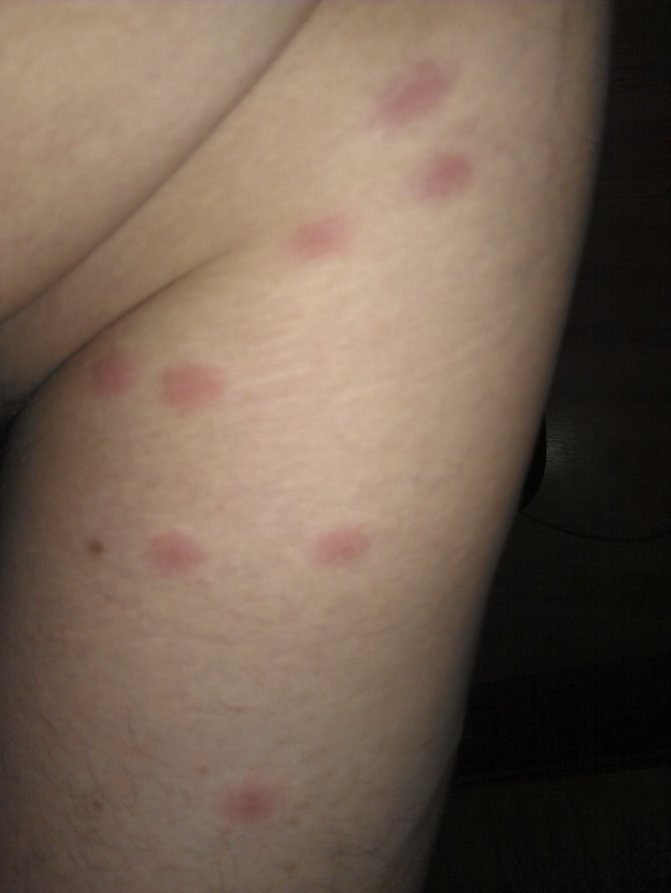
Pimples are red in color, with a rough structure, forming groups - this is a sign of an allergy. It can be caused by food, hygiene products and many others. If acne is accompanied by a runny nose and sneezing, then the diagnosis has been made accurately. By eliminating the allergen, the rash will go away on its own.
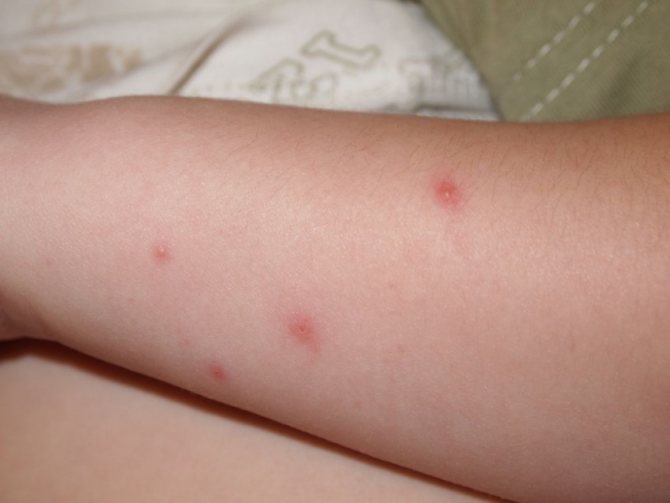
A small red rash all over the body, this may be miliaria, it occurs in very hot weather.
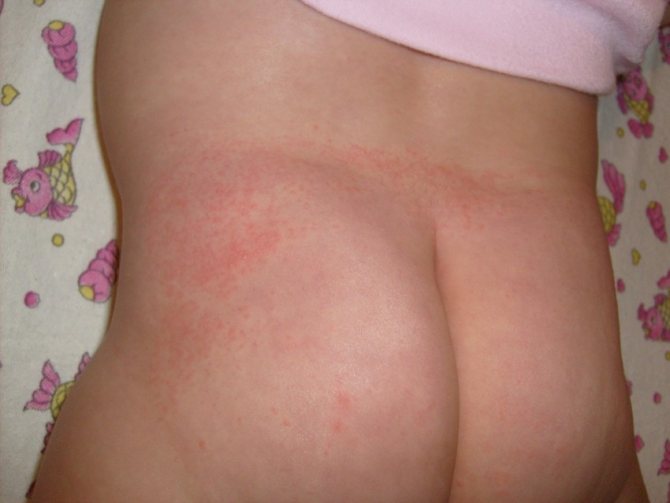
In children, sweating increases and the sebaceous glands do not cope with their function. Miliaria does not require special treatment; it is necessary to bathe the baby more often in infusions of medicinal herbs.
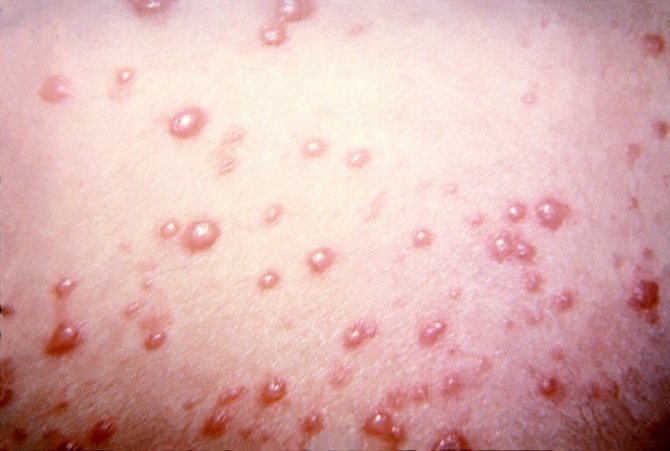
How does it manifest?
The appearance of rashes that appear on the skin of the hands may vary. It depends on what caused the appearance of such specific changes on the skin. Infectious skin pathologies are manifested by the appearance of multiple bright red spots on the skin. This small rash usually itches a lot. Rashes can appear in a child both on the arms and on the stomach.
Staphylococcal flora causes the appearance of multiple blisters on the baby’s skin, filled from the inside with serous or yellow liquid. The severe course of the disease is accompanied by the appearance of pus in such rashes. These skin blisters may burst when touched.
In this case, serous fluid or pus leaks out, and multiple bleeding ulcers remain at the site of the former rash.
A fungal infection occurs in a child with the development of multiple white rashes. In some cases, they may also have a yellowish tint. Usually the surface of fungal rashes is uneven. On the outside, such skin elements are covered with a large number of easily exfoliated skin scales. In some cases, the rash may not be intensely colored and may be colorless.
Allergic skin changes that occur on the hands and cheeks are manifested by the appearance of bright red or crimson spots. This localization is quite common in infants who are beginning to receive their first complementary foods for the first time in their lives. In this case, some food products become allergens. Quite often, various fruit or vegetable purees that are orange or yellow in color lead to the development of allergies in children.
READ ALSO: Three-step care for problem skin: Clinique Anti-Blemish Solutions | Wildberries Style Magazine
Large red spots on the arms and neck may be a sign of heat rash . This symptom manifests itself especially clearly in babies in the first months of life. Such “flaming” spots appear in places of direct contact with clothing. The affected areas may also feel warm and moist to the touch.
Pimples in a child's first year of life
Immediately after birth, pimples of various types may appear on the newborn’s body. The reasons may be as follows:
Newborn acne is red pimples with a white tip that often appear on the face of babies, sometimes on the back or chest. They appear when there is an excess amount of mother’s hormones in the baby’s body. They disappear on their own in the first six months of life and do not require any special treatment.
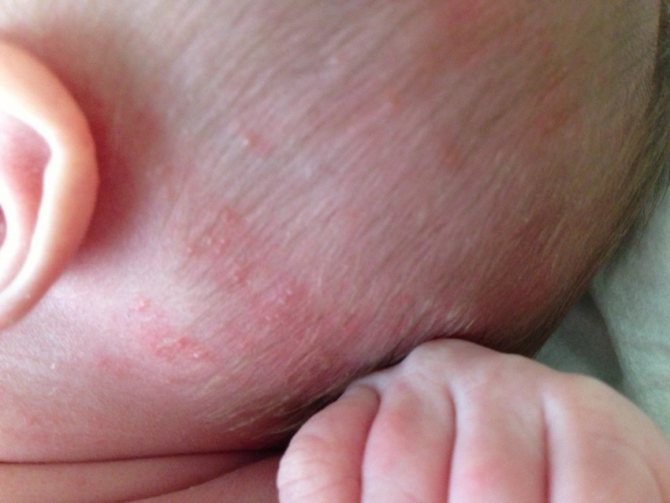
Milia. They go away on their own, but if they become inflamed, you should seek medical help. This happens due to improper care by parents, for example, when squeezing or smearing with inappropriate cream.
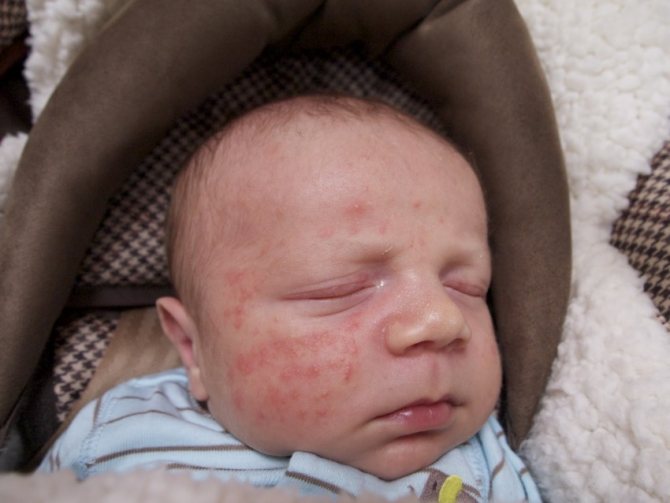
Allergies - small rashes covered with a flaky crust, often itchy and cause trouble for the baby. For recovery it is necessary to exclude the allergen.
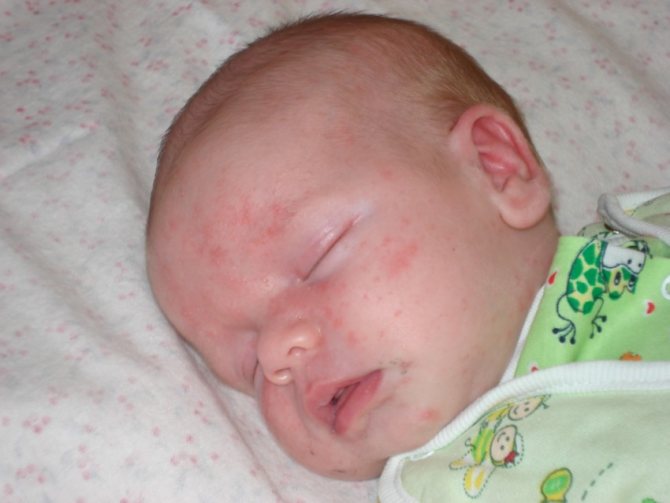
Miliaria is a small rash on the butt, armpits, and neck folds.
Prickly heat
Miliaria can also cause various bright red rashes to appear on the delicate skin of babies. Usually this pathology occurs in children aged 1-2 years. In this case, severe overheating of the baby leads to the development of unfavorable symptoms. Excessively wrapping a child and wearing a jacket or woolen blouse that is too warm can cause characteristic rashes to develop on the hands or inside of the arms.
READ ALSO: Rash after vaccination - Rashes (rashes)
Symptoms of heat rash, which develops mainly in infants, can be not only in the area of the palms. They also appear in children on their legs, arms and back. Localization depends on what caused the development of prickly heat in children. These manifestations are formed in places of direct contact with warm clothing.
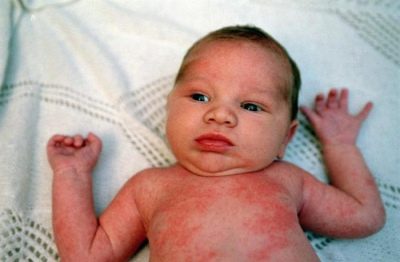
Tips for treating acne in children
- open the baby more often for air baths;
- bathe in decoctions of herbs and chamomile;
- change diapers promptly;
- ensure a comfortable room temperature, 18-22 degrees;
- Don't wrap your child up too much.
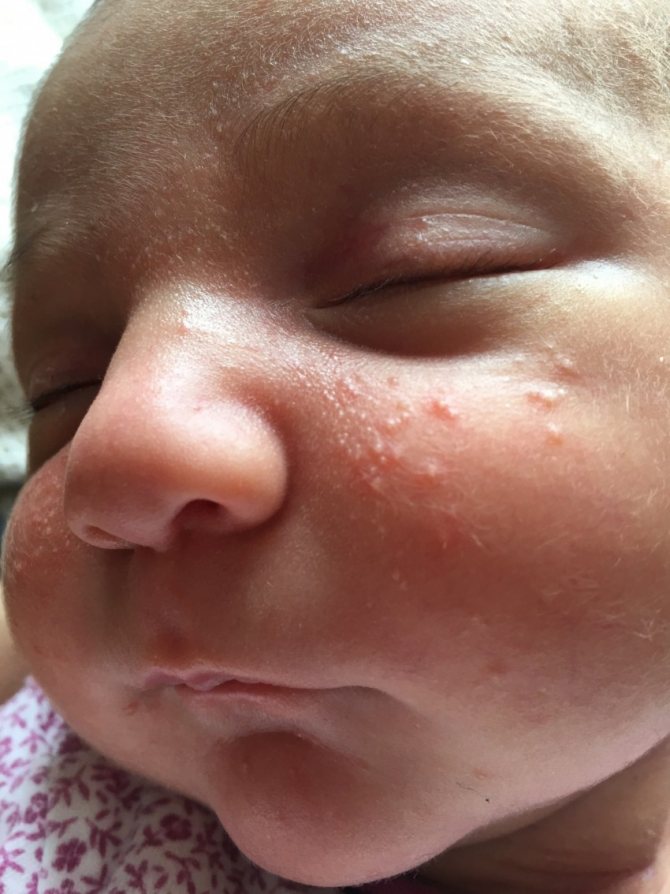
If you follow these recommendations, the heat rash will soon go away.
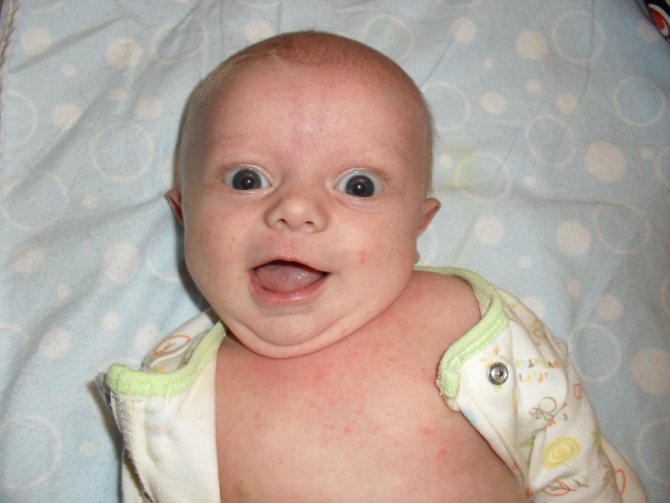
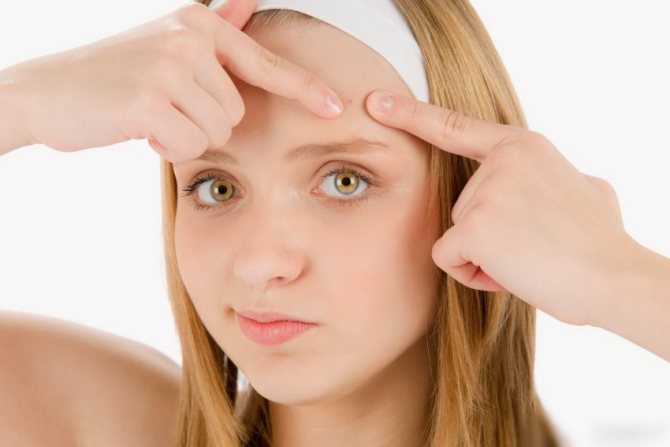
Subcutaneous acne: causes of appearance and advice from cosmetologists on how to properly get rid of acne (115 photos and videos)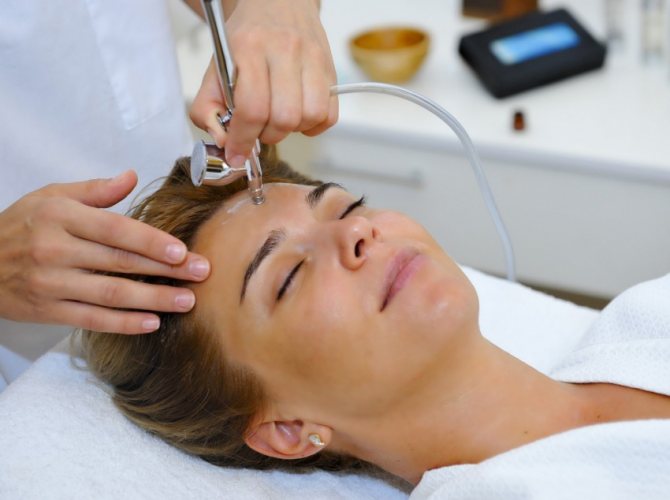
How to remove acne - advice from dermatologists on complex treatment and an overview of the most common mistakes in diagnosis and removal (120 photos)
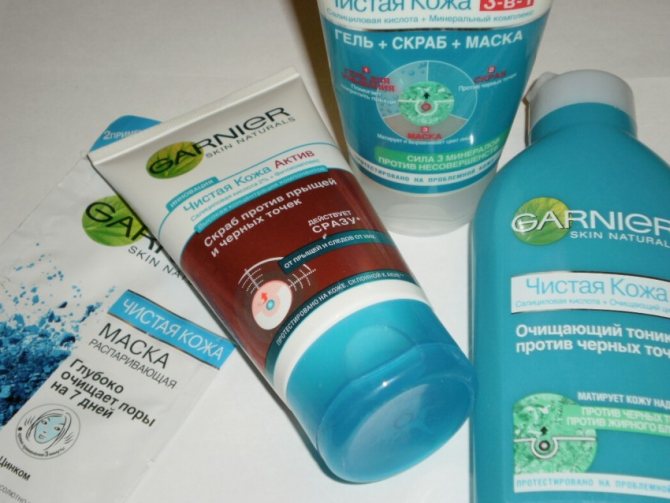
Acne remedy: how to find the right medicine for children and adults. Diagnosis and getting rid of acne at home (95 photos)
Body rashes in children are quite common. But there are many infectious diseases whose symptoms are skin rashes. Therefore, it is very important to diagnose the disease in time to prevent complications and spread of the disease.
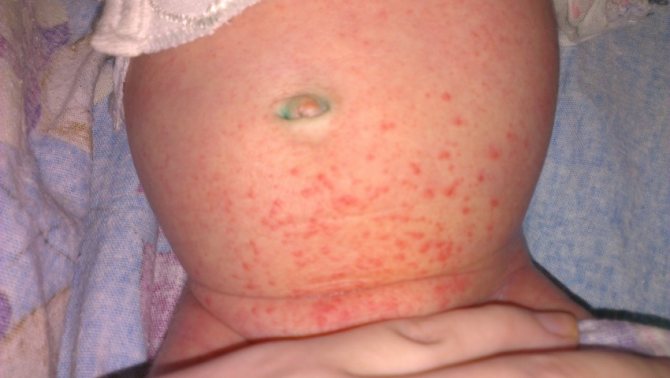
If a rash appears on your child’s skin, it is very important not to self-medicate, but to consult a doctor.
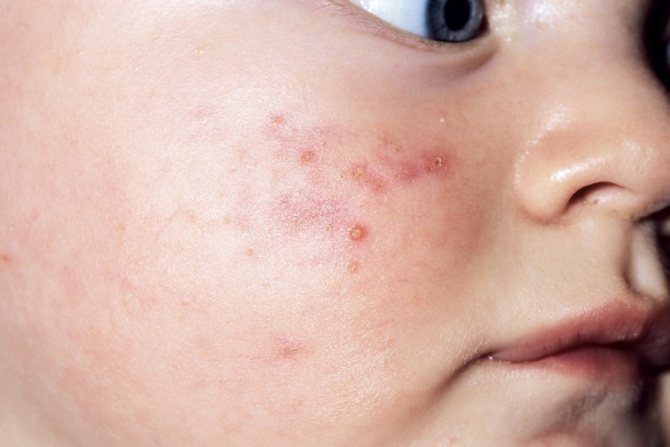
How to deal with rashes that look like insect bites at home
If a rash of an unknown nature appears, which is not mosquito bites, you can try to alleviate the child’s condition. To do this you need to use lotions. You can add two tablespoons of soda to a glass of water, moisten a piece of bandage in the resulting solution and place it on the area with the rash.
Green tea can have a good effect. A cotton pad is also moistened in it, which is then used to wipe all the places where there are rashes. If the rash is allergic in nature, then you can give the child an antihistamine according to age.
When pimples on a baby’s body can be attributed to prickly heat, then the baby’s body should be wiped with a damp towel dipped in chamomile decoction. You can also take a bath by adding a decoction of string or calendula tincture to the water. Then you should change the baby into clothes made of cotton fabric. If, against the background of the appearance of a rash, the temperature rises and the child’s well-being worsens, then you should call a doctor.
READ ALSO: Abscess in the groin: why they appear and how to treat
Help with allergies
For allergic rashes, it is necessary to find their cause. If the reason cannot be found out, then it is necessary to reconsider the menu of the nursing mother and the baby itself.
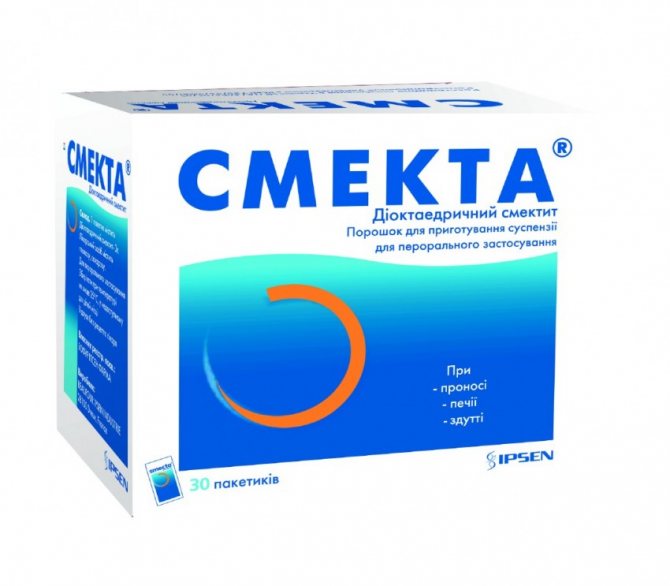
Treatment of acne in a child comes down to the following:
- By using antihistamines you can relieve allergy symptoms. In this case, it is necessary to strictly adhere to the dosages specified in the instructions.
- Next, with the help of sorbents, toxins are removed from the body; for this you can use smecta, enterosgel, etc.
- With the help of probiotics, the functioning of the gastrointestinal tract improves, because dysbiosis very often leads to allergies.
- In severe forms of allergies, hormonal drugs are used, which are prescribed by a doctor.

Treatment of infectious acne
If an infectious disease is detected, therapy is as follows:
If chickenpox is detected, then special treatment is necessary, most often using brilliant green or other antiseptics.
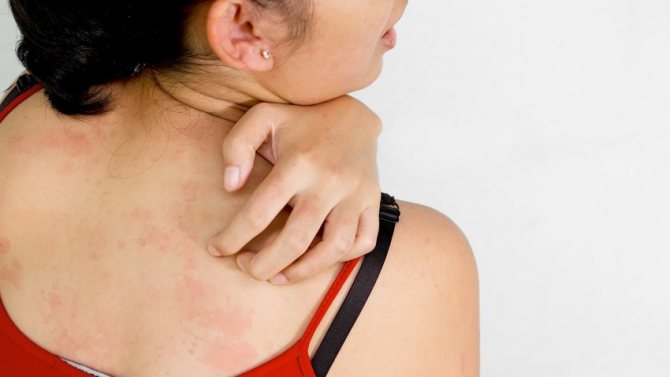
Acne on the shoulders - causes and methods of removing acne. Tips for choosing a treatment method (105 photos + video)
Types of acne - symptoms, causes and tips for getting rid of them. 100 photos and videos of treatment for different types of acne
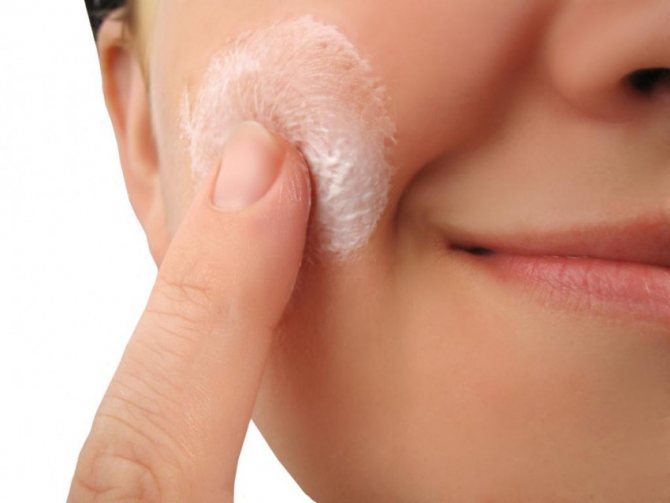
Pimples on the cheeks: the main causes of their appearance, tips on how to get rid of and cure the skin quickly and easily using modern methods (video and 110 photos)
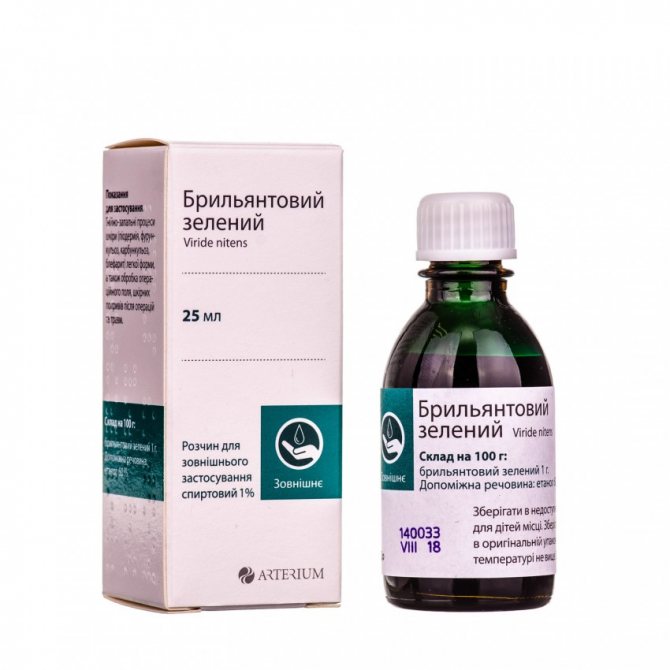
With diseases such as scarlet fever, measles and rubella, the rash goes away on its own within a few days. In case of severe itching, use an antihistamine.
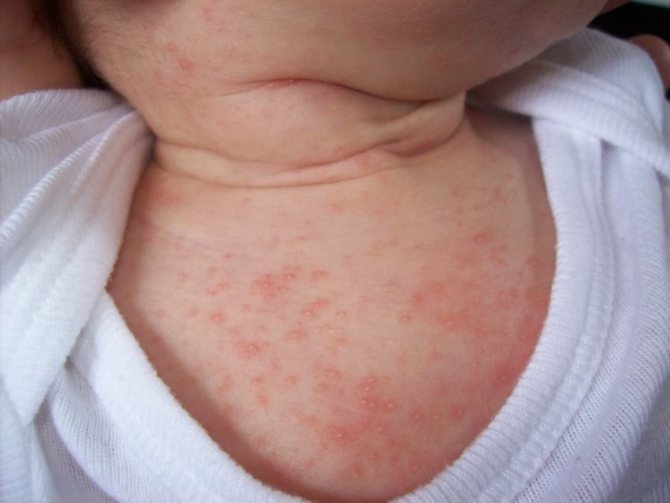
Only a specialist can accurately determine what kind of acne a child has and how to get rid of them.
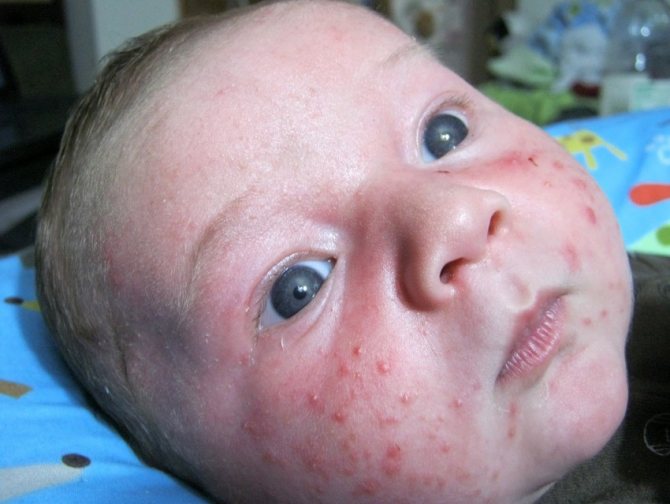
Non-infectious acne
If a child is bothered by insect bites, antihistamines should be used. Lubricate the bite site with antiallergic ointment. Anti-inflammatory absorbable compositions will help well if after the bite there is a permanent mark.
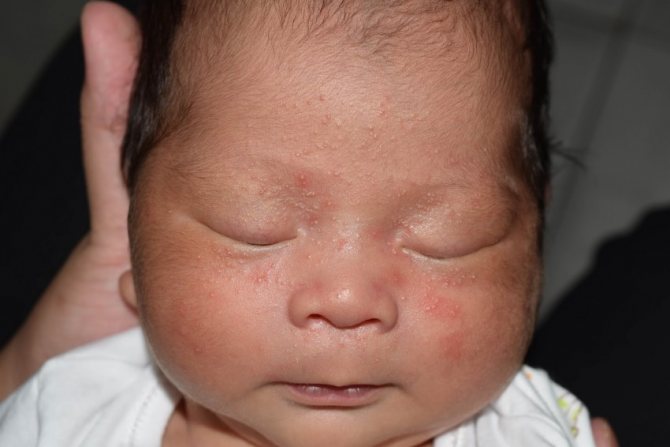
For skin rashes caused by mechanical impact, it is necessary to lubricate the affected area with diaper rash cream; Bepanthen and Desitin are good options.
The rash at the site of sunburn is lubricated with panthenol.
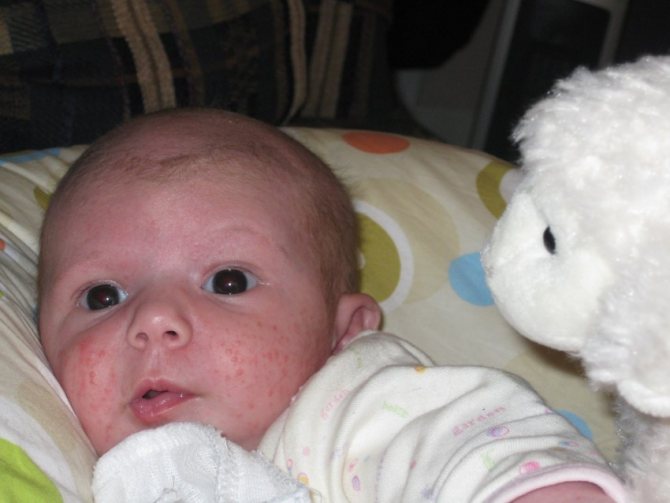
- Pimples on the legs: types, causes, tips on how to get rid of pimples and blackheads quickly and effectively (120 photos and videos)
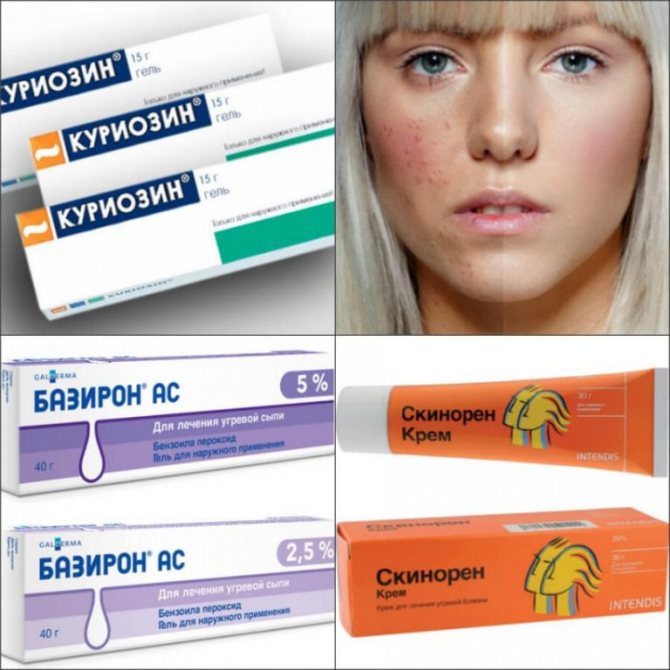
Acne cream: TOP 3 best products and comparison of their effectiveness. Tips from dermatologists on how to get rid of acne (125 photos)
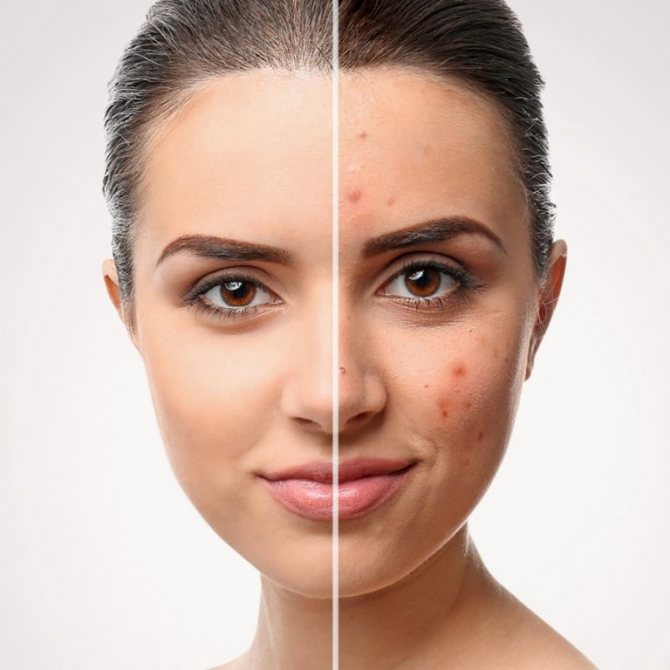
Pimples broke out: finding the cause, choosing a remover, tips and the best skin care products (70 photos)
